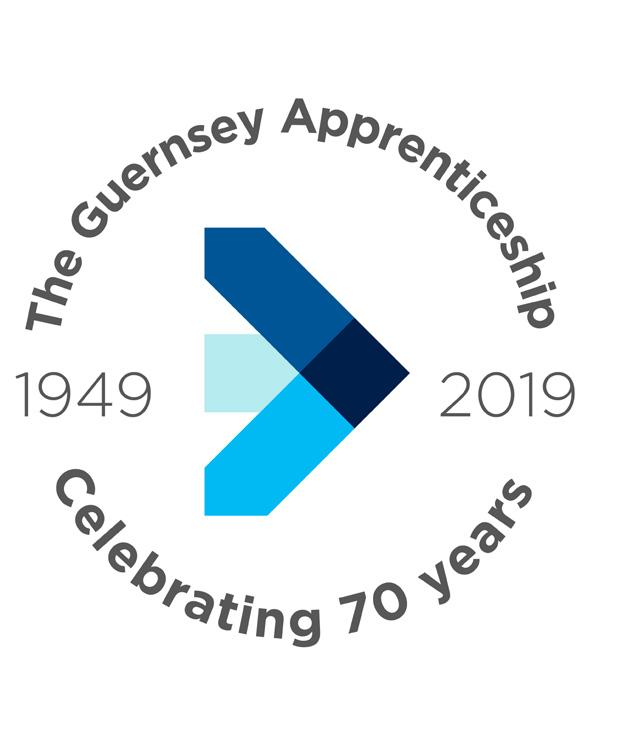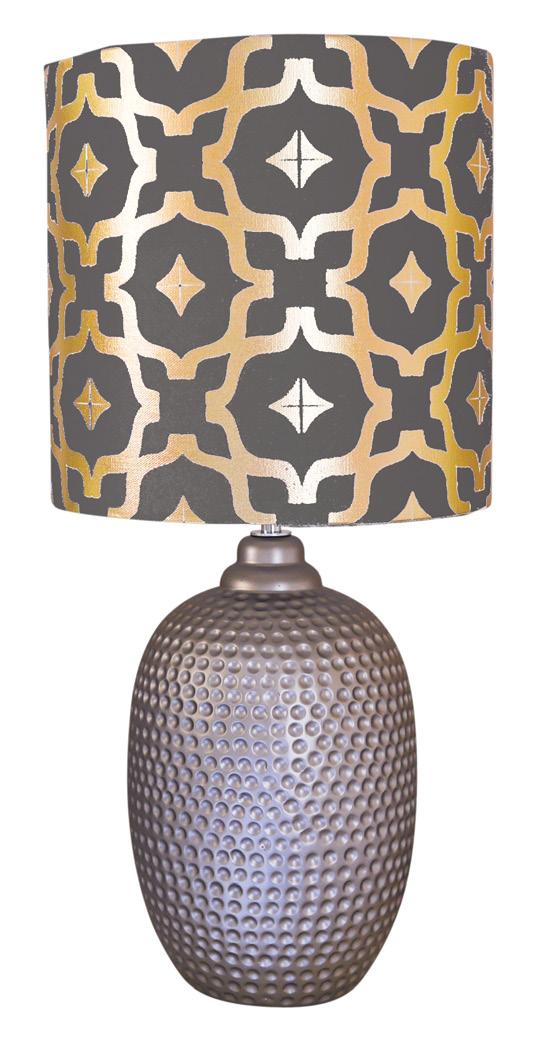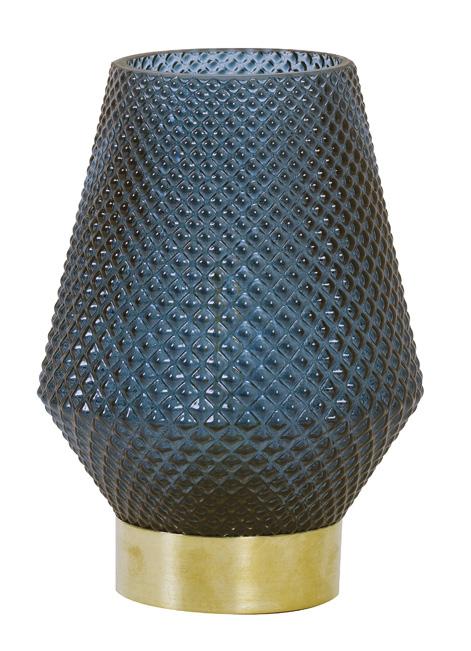
15 minute read
Apprenticeships
70 YEARS OF APPRENTICES IN GUERNSEY
This year marked a major milestone for apprenticeships in the Bailiwick of Guernsey as the scheme celebrated its 70th anniversary. The first island apprentices started their training in 1949. In the 70 years since then, many thousands of islanders have benefited from the training and qualifications offered by the scheme.
Advertisement

The new Guernsey Apprenticeship offers the opportunity for an individual to earn a salary and gain a nationally recognised technical, professional or vocational qualification. That ‘earn as you learn’ approach helps encourage young people to stay within education even as they start their career, and can also help older people who want to transfer into a new vocation or gain a qualification.
The Guernsey Apprenticeship is administered through the the Guernsey College of Further Education (GCFE), working in partnership with the States of Guernsey and local employers. Apprenticeships can vary in length depending on the sector and can take between 18 months and five years to complete, with time spent for off-the-job training at the GCFE - usually one day per week.
The apprenticeship scheme may have a long history, but that doesn’t mean it hasn’t moved with the times. Its remit includes responding to the emerging needs of the island’s industries and ensuring that the labour skills needed to sustain economic prosperity are developed.
This year, for example, the GCFE has launched three new apprenticeships, in adult care, early years and retail management, in response to the needs of industry.
Faculty director, Chris Torode, says that it has been important to revitalise the scheme to ensure that it meets the needs of employers.
“We need to continue to assess what we’re offering and ensure that it is right for the island and the local economy. Over the past couple of years we have reviewed the curriculum and condensed the time frames where possible following feedback from employers. We want to shape each apprenticeship so that it meets employers’ needs but also offers an excellent training experience for the apprentice.”
Guernsey differs from the UK’s apprenticeship scheme in that it enforces a prerequisite that all apprentices must be in employment. For Chris, that’s an important factor in the success of the scheme: “We think there are real benefits to this, and that it is crucial in the local context. When an apprentice is in employment, they have the constant vocational contextualization of the skills they are learning at College which is important for their development. We also have a limited pool of employers so we need to ensure that people are being trained in areas where there are jobs available.”
The involvement of employers entails collaboration and partnership with industry to make sure that the courses are meeting employers’ requirements and imparting the correct skills to students.
Ruth Taylor is an apprenticeship officer at the GCFE. “We have to be very mindful of the sustainability of courses and how we manage the cohorts of students. The construction industry, for example, really recognises the apprenticeship scheme as a crucial tool for them in terms of recruitment and use it to
WE WANT TO SHAPE EACH APPRENTICESHIP SO THAT IT MEETS EMPLOYERS’ NEEDS BUT ALSO OFFERS AN EXCELLENT TRAINING EXPERIENCE FOR THE APPRENTICE.
find new employees. Other sectors, however, can find it harder to find new employees. We are also now fortunate to be able to offer all of our apprentices the opportunity to continue to study for their English and maths qualifications if they have not yet achieved them, recognising that these are essential for career progression and that employers need functional levels of literacy and numeracy in the workplace.”
Their approach certainly seems to be working. This year saw an increased intake, with most courses approaching capacity. Carpentry and joinery, for example, which had 14 students last year, has a cohort of 20 for this academic year. The success of the scheme is also spreading to other islands, with 12 Alderney apprentices currently enrolled on the Guernsey courses.
While employers are clearly important to those who organise the island’s apprenticeship scheme, so too are the apprentices themselves. The GCFE wanted to ensure that everyone was protected so they have produced new contracts that are agreed between the employer, the apprentice and the education provider.
For Ruth, it’s important that the employers are as engaged with the scheme as the apprentices: “The employers really do have to buy in to the apprenticeship for it to be a success. They don’t pay for any of the training their employee receives, but they are contractually obliged to pay them a wage during their apprenticeship. We are also currently developing programme schedules which will set out their responsibilities more clearly.
“At the moment their responsibilities are just provided as guidelines, but the new schedules will lay out the content of the programme and the associated expectations from the employer. We haven’t had anything as comprehensive in place before, but we believe it will be of benefit to everyone as it means that the apprentice will be mirroring in the workplace what they’re learning in education. We will also be carrying out more rigorous employment checks such as verifying insurance documentation. We want to make sure we look after our apprentices and employers and we think this is the best way to do it.”
With the Guernsey Apprenticeship modernising in so many areas, it is unsurprising that the administration of the scheme has also been improved. The website has recently been revamped so that they can speed up the process of registration and make it less onerous for users.
Caroline Moody, the final member of the apprenticeship team, explained some of the benefits of the new system: “We are now able to take online employer registration applications, and also online enrolments throughout the academic year. It used to be the case that every student had to start in September, but now we have sectors which can accommodate roll on, roll off apprenticeship programmes rather than it having to be completed in a linear pattern. It offers greater flexibility, and we hope will be a real benefit to some employers.”
According to Chris, the College is in a good position to facilitate links between employers and potential employees. He says it’s something that can benefit all parties: “We are now actively trying to match future apprentices with employers, and it’s something we can promote as part of our enrolment process. We’re trying to be more proactive, so we’re engaging with students earlier as they approach post-16 education.”
Seven decades after the apprenticeship scheme started, it is clearly showing no signs of slowing down. Rather, the apprenticeship team is already looking forward to their future students. The GCFE has started an outreach programme to visit primary and secondary schools, where they will not only talk about the history of the scheme but promote its future.
For more information about the Guernsey Apprenticeship, visit www.guernseycollege.ac.gg or email apprenticeships@gcfe.net
70 YEARS AND COUNTING
The seven decades of the apprenticeship scheme have seen many thousands of islanders trained in their chosen vocation, supported by a host of the island’s employers.
Scheme’s inception: 1949
Current apprentices: 330
Total number of apprentices: over 5,000
Total number of employers: over 1,000
Total hours of lessons: 664,090
THE APPRENTICESHIP SCHEMES
The Guernsey College of Further Education currently offers apprenticeship courses in the following areas: • Adult Care • Professional
Cookery • Construction and the Built
Environment • Early Years • Engineering • Hairdressing • Horticulture • Retail
CONSTRUCTION
Those working in the construction industry can undertake apprenticeships in a wide range of specialisms including: • Construction and the Built
Environment • Electrotechnical Technology (Electrical) • Painting and Decorating • Plumbing Studies • Site Carpentry and Bench Joinery • Trowel Trades
BEING AN APPRENTICE THEN...

ROD BREHAUT
Years of apprenticeship: 1962 - 1967
Apprenticeship: Carpentry and Joinery
I WORKED FOR 48 AND A HALF HOURS A WEEK, WITH THURSDAY AFTERNOONS OFF WHICH WAS STANDARD AT THAT TIME IN GUERNSEY. FOR THOSE HOURS I EARNED THE GRAND TOTAL OF TWO POUNDS AND FIFTEEN SHILLINGS A WEEK. When Rod Brehaut began his apprenticeship in 1962, he was just 14 years old.
“When I first started my apprenticeship it was a very different environment to today. One of my first jobs was actually making some of my own tools, which I can’t imagine many apprentices do now. We couldn’t afford to buy everything so we had to make do with crafting things ourselves. But it did make them more special in some ways - I actually still have my winkin’ sticks and witch’s tooth.”
For the first three years of his training, Rod worked for local firm Brennan’s before he was encouraged to move to another role that would give him better opportunities for progression and development.
“I enjoyed my apprenticeship from the start, there was always something very satisfying about creating something. Moving employers, however, was the right thing for me to do at the time as it meant I completed my apprenticeship under a very skilled cabinet maker, in a joinery shop that was very well equipped. Not only did I learn a lot in the workshop, but I was also sent out to client jobs which was great experience. It’s all very well manufacturing something, but it’s nice to see it installed and serving its function.”
Unlike today’s apprentices, Rod had the choice as to whether or not he attended educational classes alongside his workplace training. He chose to do so, and said it was a useful experience.
“I remember that the classes were held above the fire station. I enjoyed them as they gave me time to make things which I couldn’t do in the workshop in my day job. I usually used the time to make things for my family. One of my most successful pieces was a coffee table with drawers which I think my wife and I only got rid of a few years ago.” While Rod was clearly enthusiastic to learn, he admits that it was also hard work.
“I worked for 48 and a half hours a week, with Thursday afternoons off which was standard at that time in Guernsey. For those hours I earned the grand total of two pounds and fifteen shillings a week.”
When he looks back at his apprenticeship, Rod says that much of the work he did at the time no longer exists in the same way now.
“It has changed so much. Plastic windows for a start have made a huge difference, as have plastic doors. We used to make all those by hand – I spent my twenties working a lot of overtime to keep up with the demand as I’d sometimes be making 20 doors at a time, that certainly wouldn’t be the case now.”
Due to health issues, Rod didn’t stay in his apprenticeship profession for his whole working career, but he says that the skills he learned have been useful throughout his life.
“What I learned during my apprenticeship gave me the knowledge to build my own house at Cobo at 22 years old, where my wife and I lived happily for 23 years. Joinery certainly stands you in good stead for life generally and for providing you with the skills to move on to other jobs when necessary.”
More than 50 years after he finished his apprenticeship, Rod is still clear on the benefits of the scheme and says he would encourage anybody to follow in his foosteps.
“I would advise anybody to do an apprenticeship in any trade that suits them. It will always be with you and you will always have it to fall back on. I learned so much during my apprenticeship. My advice to anybody undertaking one now would be to listen to everything they are told and learn as much as they can.”
... AND NOW

TOM TEERS
Years of apprenticeship: 2015 - 2020
Apprenticeship: Carpentry and Joinery
IF YOU WANT TO BE AN APPRENTICE, YOU HAVE TO BE DRIVEN AND KEEN TO LEARN. YOU HAVE TO BE GENUINELY INTERESTED IN THE ACTUAL JOB THAT YOU ARE DOING, OTHERWISE YOU WON’T BE LOOKING TO LEARN AND DEVELOP. Tom Teers is due to finish his apprenticeship next year, having worked for Wayne Barrett carpentry and joinery throughout his training. Tom came to his current career via the sports course at the College of Further Education, but he says he’d always had a real interest in the trade.
“I always thought that if football didn’t work out for me, then I’d be really keen to go into carpentry. When I was at school I took part in a really helpful scheme where we went to the College of Further Education every week and experienced each trade and I always really enjoyed carpentry.
“My uncle also owns a building company so when I was at school I always worked for him on Saturdays, and completed my school work experience with him. So I always knew that it was something that I enjoyed, and that I wanted to become better at. I love seeing the end result and knowing that I created it.”
When Tom started his carpentry job it was halfway through the academic year, so he worked for six months before he started his apprenticeship. While the delay could have been frustrating, he says it ended up being an advantage.
“Being on site for half a year before I started the apprenticeship training really gave me a lot more confidence when it came to using the tools at College. When you first start in a job like this, you are learning everything from scratch, but at least when I came to College I had a bit more confidence when it came to using the equipment.”
Under the apprenticeship structure, Tom spends four days a week in the workplace and one day a week on campus at the College of Further Education and he says it’s an ideal mix when it comes to learning.
“I think an apprenticeship is much better than simply learning on the job. I learn a lot at work, but I learn a lot at College as well. My boss is great at teaching me how to look at plans, how to work self-sufficiently and how to run a business. At the same time, I learn technical skills at College that aren’t part of my day to day job and how to manage the written and mathematical sides of carpentry.”
For Tom, his advice to future apprentices is simple. “If you want to be an apprentice, you have to be driven and keen to learn. You have to be genuinely interested in the actual job that you are doing, otherwise you won’t be looking to learn and develop.”
Tom is clearly learning as much as he can during his time as an apprentice, which was highlighted when he recently won the GBTEA’s apprentice of the year award in recognition of his achievements and contribution to the course.
While Tom’s apprenticeship is drawing to a close in the next year, he certainly doesn’t see that as the end of his opportunities to learn and develop.
“I am excited about being fully qualified but there is still more I’d like to do. I will have completed five years of site carpentry and bench joinery, but there is the option to go back to College in a couple of years and get a further qualification through the CIOB’s site foreman course. I like the fact that there are more qualifications available so you can continue to advance your career.”
Tom certainly has no lack of ambition. He says that he’d love to work abroad at some point to learn new skills, that he would enjoy teaching, and that he’s keen to be self-employed during his career. But for now, he’s very happy learning as much as he can during his apprenticeship and making the most of the opportunities it has given him.
Guernsey Property and Construction magazine is published four times a year:
Spring, Summer, Autumn and Winter
Guernsey Property and Construction magazine has a focused readership base of contractors, architects, local government departments, construction and property federations and associations for the island, surveyors, industrial and commercial developers, mechanical and electrical engineers, structural engineers, sub-contractors, suppliers, residential, letting and commercial property agents.

Copies of the magazine are distributed across Guernsey and, together with the online digital version, ensures a readership in excess of 12,000 carefully targeted and relevant readers.
For editorial opportunities
Contact Tamara Timothy on 07911 732398 or email her at: editor@collaborateci.com
For advertising opportunities
Contact the team at: hello@collaborateci.com
www.collaborateci.com www.guernseyconstructionawards.com
FINISHING TOUCHES
As the nights draw in, get cosy at home with our pick of the best furniture, lighting and accessories to make your house more hygge.
Battery lanterns Acorn Lifestyle FROM £17

Copper wire light terrarium B&Q £18

Scarlet medium sofa in dark teal Marks & Spencer £1,199

Karish floor lamp Acorn Lifestyle £239

Chunky knit throw Marks & Spencer £70 Taha’a lampshade in pewter and gold Penelope Hope FROM £95


Faux fur rug in grey sheepskin Next £35
SMELLS LIKE HOME
Make your home a haven this winter with our pick of the best scents to warm up with.


Set of two faux fur storage baskets Next £38
This Works candle in Black Spice and Cedar Plaisirs £25 Molton Brown candle in Black Peppercorn All Beauty £37.05 Ted Baker diffuser in Pink Pepper and Cedarwood Feel Unique £28.35












